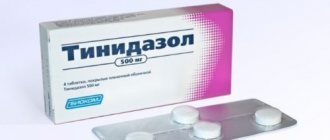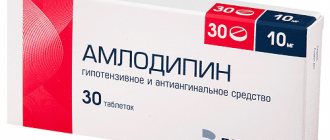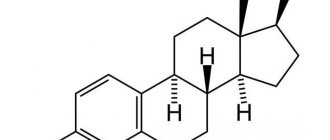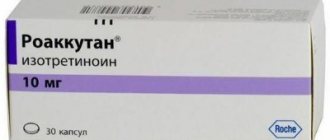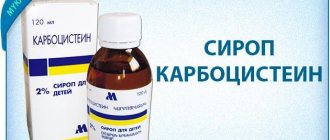Urinary incontinence in children under three years of age is not considered a problem. But when such signs appear in adults, it is customary to talk about the development of the disease. Problems with involuntary urination occur in men, usually after 45 years of age, and are a fairly common pathology. In medicine, the term “incontinence” is used to define this problem. This pathology is not identified as a separate disease, but is only a consequence of existing health problems. This condition does not affect the physical well-being of a man. But it significantly worsens the quality of life and causes difficulties in moral and psychological terms. Very often, the problem of uncontrolled urination is not irreversible and is eliminated after visiting a doctor and subsequent medication or surgical treatment. But only a small percentage of men are ready to talk openly about the existing problem and turn to specialists for help. Tablets and medications for urinary incontinence in men that will help treat the disease are described below. It is important to remember that ignoring this problem leads to the development of serious pathologies, which can subsequently develop into a serious problem.
There are several types of this pathology:
- stressful;
- urgent;
- mixed.
The stress type occurs in approximately 50% of cases of the disease. Urgent is given in about 20% of patients. And in 30% of patients, doctors diagnose a mixed form of the disease. When under stress, a small amount of urine is usually released involuntarily. This happens when laughing, coughing or physical activity. The urgent type is characterized by the release of a large amount of urine, while the patient experiences a strong urge to urinate. There is no doubt that this pathology requires treatment, which is carried out after consultations and examinations by qualified specialists - urologists. Then drug treatment is prescribed, including tablets and drugs for urinary incontinence in men, various procedures, and in severe cases, surgery is indicated.
Classification of pathology
There are several types of the disease, each of which has its own treatment characteristics:
- Urge incontinence. It is also called imperative or urgent. In this case, the man is aware of the urge, but cannot tolerate or control it. This type occurs in patients with diabetes mellitus or Parkinson's disease. Sometimes this type of urinary incontinence occurs after a stroke.
- Transient urinary incontinence is associated with the action of external factors. As soon as such factors stop affecting a person, the disease disappears. The causes of its occurrence include alcohol intoxication, impaired bowel movements, cystitis in the acute stage, taking diuretics, alpha-blockers, calcium antagonists, antipsychotics and some other medications.
- Stress urinary incontinence can occur with excessive physical activity, heavy lifting, coughing, sneezing, laughing, etc.
- Mixed type is a pathology that combines signs of stress and urgent conditions. In this case, when the bladder is full, it spontaneously empties due to a decrease in the contractility of the sphincter.
- Bedwetting in men can be due to a variety of reasons. This type of pathology is divided into:
- Constant – when involuntary urine leakage occurs every night.
- Recurrent - in this case, incontinence does not occur every night.
Medical worker Elena Konyaeva will talk about the types and causes of the disease among men:
- Congenital – associated with impaired development of the urinary system in children. This pathology will accompany a person into adulthood.
- Acquired incontinence can be associated with stress, infection, changes in the elasticity of the bladder walls, or age-related changes (more often observed in people over 60 years of age).
Predisposing factors contributing to the appearance of urinary incontinence in men include the presence of foci of infection in the body (chronic tonsillitis, dental caries, etc.).
Duloxetine
Mechanism of action
. Duloxetine is an antidepressant drug. It is recommended for use when there is a frequent urge to urinate, as it has a sedative effect and has a positive effect on the nervous regulation of the bladder. The drug also helps relax the muscles of the organ, but reduces the muscle of its sphincter.
Duloxetine is recommended for stress urinary incontinence.
Side effects and contraindications:
- Insomnia and drowsiness.
- Dizziness.
- Vision problems.
- Hand trembling.
- Decreased appetite.
- Increased fatigue.
- Dry mouth.
- Constipation or diarrhea.
It is important to pay attention to contraindications to the use of this drug, including: glaucoma, breastfeeding, pregnancy, age under 18 years, renal and liver failure, high blood pressure.
It should be taken into account that abrupt withdrawal of the drug can lead to headaches, surges in blood pressure, tachycardia and attacks of dizziness.
Causes of the disease
A variety of factors can lead to urinary incontinence in men: from disruption of internal organs to age-related changes after 50 years. The most common of them include:
- The use of drugs that have a diuretic effect and affect muscle tone.
- Enuresis can occur after prostate surgery.
- Injury to the spinal cord or brain, which results in loss of control over urinary function.
- Diseases of a neurological nature (multiple sclerosis, etc.).
- Weakness of the pelvic muscles due to a sedentary lifestyle, chronic constipation or prolonged physical activity.
- Bladder infection.
- Development of prostatitis, adenoma or other prostate disease.
- Stressful or depressed state.
- Intoxication.
- Taking high doses of medications with a sedative effect.
Doctors also identify other reasons. At the same time, urinary incontinence in older men in most cases is associated with age-related changes in the body, while young people are characterized by disturbances in the functioning of internal organs. With age, the risk of enuresis increases.
Why is urinary incontinence dangerous?
Enuresis is a pathology that greatly worsens the quality of life of people. The disease is interconnected with problems of a socio-psychological nature. Incontinence negatively affects many aspects of life. People experience:
- difficulties at work;
- difficulties in establishing and maintaining contacts;
- disharmony in marital relationships.
In most cases, patients with a delicate problem delay seeing a doctor and, as a result, the disease takes an advanced form . Enuresis causes serious complications:
- chronic inflammation of the skin and mucous layers of the genitals;
- genitourinary system infections;
- septic shock.
Severe development of sepsis ends in death.
Diagnostics
To begin treatment for enuresis, the doctor must not only make a diagnosis, but also identify the causes of its development. This requires examination of the patient, which consists of:
- Instrumental research.
- General analysis of blood and urine.
- Assessing the condition of the prostate.
- “Cough” tests, which are performed when the bladder is full.
- Ultrasound of the pelvic organs.
- Endoscopy.
- A combined urodynamic study, during which the level of pressure on the bladder is determined, profilometry, uroflowmetry, and cystometry are performed. These techniques make it possible to assess the condition of the urinary tract.
The main task of diagnosis is to confirm the fact of urinary incontinence, determine the type of pathology and the factors that led to the disease.
Treatment
Treatment of urinary incontinence in men is associated with the reasons that led to it. After a comprehensive examination, the doctor will prescribe specific therapy aimed at eliminating not only the symptoms, but also the causes of the pathology. In this case, medications, physical procedures, or surgical intervention may be used.
Use of medications
Drug therapy consists of using:
- Alpha blockers (Alfuzosin, Tamsulosin, Doxazosin, etc.), which are effective in cases of infravesicular obstruction or prostate adenoma. The medicine has a relaxing effect on the smooth muscles of the sphincter and prostate, as a result of which the outflow of urine is normalized.
- Psychotropic drugs (“Tofranil”, “Depsonil”, “Priloigan”, etc.), which help muscles relax and block nerve impulses in case of spasm.
- Reductase blockers – drugs based on finasteride and dutasteride. Their use is effective when necessary to reduce the synthesis of the hormone dihydrotestosterone, which is often exceeded in patients with prostate adenoma. These urinary incontinence pills reduce the size of the prostate, which helps reduce the symptoms of enuresis.
Oxybutynin relaxes the smooth muscles of the bladder. In patients with a neurogenic bladder, oxybutynin increases its capacity, reduces the frequency of contractions and relaxes the detrusor, and reduces the number of urinations. Price in pharmacies from 594 rubles.
- Anticholinergic drugs and antispasmodics (Tolterodine, Oxybutynin, etc.), which relieve nervous tension. As a result, the bladder muscles relax. The combined use of drugs from these two groups is more effective than their use separately.
- Tricyclic antidepressants based on imipramine. Such tablets have a relaxing effect and block impulses that lead to sphincter spasm.
Simultaneously with drug treatment, the patient is prescribed physiotherapeutic procedures and special exercises. If such treatment does not give the desired result, the doctor may recommend surgery.
Surgical intervention
Surgery is considered the only solution to the problem of urinary incontinence after removal of the prostate or for urinary incontinence in spinal patients. Effective methods of surgical treatment are:
- ProACT system.
- "Functional" retrourethral sling.
- Artificial urinary sphincter.
Alexey Yurievich Plekhanov, urologist-andrologist at the Andros clinic, will talk about methods of treating the disease in men:
- Adjustable sling systems, including those that are embedded in the bone.
- Self-fixing sling.
- Drainage of urine into a special urine collection bag using a catheter.
Due to the fact that there are a huge number of ways to treat the pathology, the prognosis for men is in most cases positive. Even if it is not possible to completely eliminate urinary incontinence, the degree of existing problems can be significantly reduced.
Doctors call the artificial urinary sphincter the gold standard. This operation is expensive and requires only a highly qualified specialist. At the same time, the implant can act on the urethra for a long time. But, it cannot always be used to treat urinary incontinence in older men due to the fact that the patient must be able to physically and mentally handle the sphincter.
Implantation of an artificial bladder sphincter
This implant is a cuff filled with water that compresses the urethra, preventing urine from being released until the man himself wants to go to the toilet. To urinate, he needs to press a button that controls the pump, which causes the sphincter to relax. At the same time, the liquid from the pump flows into a special reservoir.
After some time, the cuff fills with water on its own and puts pressure on the urethra, holding urine in it.
Physiotherapy
Treatment of urinary incontinence at home involves performing special exercises. Kegel exercises have a good effect - this is an excellent workout for the pelvic muscles. To perform them, it is enough to squeeze and unclench the muscles of the perineum.
Let's take a closer look at the video:
Lifestyle
If there is urinary incontinence, the doctor may advise the patient to engage in so-called planned urination. To do this, you need to strictly limit the amount of fluid consumed. Drinking is allowed in small portions at strictly specified times. In addition, the timing of bladder emptying is planned.
To quickly get rid of the disease, doctors recommend that the patient reconsider his lifestyle: completely abandon or minimize smoking and drinking alcohol, exercise regularly and ensure proper rest.
Diet
Proper nutrition plays an important role in the treatment of urinary incontinence. It should be based on a lot of fresh vegetables, fruits, cereals and other foods high in fiber. At the same time, you should minimize the consumption of salty, fried, spicy and sour foods. Strong tea, coffee and carbonated drinks have a negative effect on the condition of the urinary system.
Physiotherapy
The purpose of physiotherapy in the treatment of enuresis is to:
- Improvement of muscle activity due to which it is possible to hold urine in the period between urinations.
- Reduced pressure on the bladder during laughter, coughing or intense physical activity.
- Increased muscle tone, due to which, when pressure increases, urine remains in place.
Treatment with folk remedies
Along with conservative treatment, the doctor may recommend the use of folk remedies that make it possible to speed up recovery and prevent its recurrence. For this use:
- Plantain decoction.
- A decoction of dill seeds.
Traditional medicine recipes:
- Sage tincture.
- Decoction of onion peels.
Drugs for the treatment of incontinence in the elderly
For age-related incontinence in older women, anti-incontinence medications are used.
Since test indications are individual, only a specialist prescribes the method and medication:
- A group of antidepressants is used for stress enuresis. Duloxetine, Imipramine regulate urination, promote relaxation, and significantly reduce toilet visits;
- Antispasmodic medications Spazmex, Oxybutynin, Driptan remove inflammation, increase the time period for filling the bladder, and regulate nerve signals. The most easily tolerated drugs.
- Hormone modeling methods . Reduce atrophic disturbances in the integrity of the bladder walls. Desmopresin is a representative of drugs in this pharmacological group. Only the attending physician prescribes and regulates the intake of pills.
- Anticholinergic methods . The drug Driptan, due to its healing characteristics, is equally optimal for girls and older women.
Use of hygiene products
Treatment for enuresis is usually quite lengthy. Therefore, in order for the patient to feel comfortable during this time, the doctor may recommend using pads for men for urinary incontinence. After all, few people can afford to spend all their time at home, and such hygiene products will help avoid psychological discomfort.
The photo shows a mannequin in knitted panties with a urological pad
The advantages of urological pads include:
- Excellent absorption even of significant amounts of liquid.
- Elimination of unpleasant odor.
- They do not cause skin irritation or allergic reactions.
For elderly patients suffering from senile urinary incontinence, which is usually observed in men after 60-70 years of age, an adult diaper can be used. Such diapers are also used for bedridden patients.
Consequences of the disease
Often, men are embarrassed by this delicate problem and prefer not to seek medical help for it. But, at the same time, the disorder not only does not disappear, but can also lead to the development of other, no less unpleasant consequences:
- Depressive state and increased nervousness.
- Deterioration of erection and decreased sexual function.
- Violation of adaptation in society.
- Hydronephrosis.
- Hypertension.
- Kidney failure.
To prevent this, it is important to seek medical help when the first signs of incontinence appear. After all, the sooner treatment is prescribed, the faster it will be possible to get rid of the problem.
Due to urinary incontinence, erectile function deteriorates, which can ultimately lead to a complete lack of erection. Read more here.
Prevention
In order not to encounter the problem of urinary incontinence, it is important for a man to adhere to certain rules:
- Avoid excessive consumption of alcohol and drinks with high caffeine content.
- Monitor your weight, not allowing it to increase above normal.
- Give up bad habits and lead a healthy lifestyle.
- Adhere to the principles of a balanced diet to avoid constipation and other digestive disorders. In addition, it is important that the daily diet contains the amount of vitamins and microelements necessary for an adult man.
Video from neurosurgeon Mitriy Preobrazhensky and proctologist Roman Sorkin about the use of electrical stimulation and physical exercise to treat incontinence:
- Enrich your diet with a large number of foods rich in fiber, which has a positive effect on the condition and functioning of the digestive system, normalizes the amount of glucose and cholesterol in the blood. An adult man needs to consume at least 25 g of fiber per day.
- Perform Kegel exercises for preventive purposes.
- Monitor your health and body condition, and if necessary, seek help from a doctor.
Urinary incontinence is a very unpleasant problem that a man can face at any age. But it is important to understand that it is treatable, especially if it was started at the initial stage of its development. Therefore, in order for the therapy to be as effective as possible and the disease not to lead to complications, it is important to consult a doctor as soon as a problem arises.
Physiotherapy
Men may benefit from doing Kegel exercises to strengthen the pelvic floor muscles that control urine flow. They are effective for stress and urge incontinence. The exercises are done like this:
Appointment with a urologist: preparation for examination, diagnosis and treatment measures
- To feel the pelvic floor muscles, you need to try to stop the flow of urine while urinating and continue it again. The muscles that compress the urethra and anus are the ones that need to be trained.
- Having remembered the sensations in the muscles while trying to stop urination, begin to train these muscles in the same way outside the process of emptying the bladder. They are squeezed and relaxed.
If you feel compression of the muscles of the intestines or stomach, then the exercise is being done incorrectly.
- The pelvic muscles are tensed and held in this state for three seconds. The next three seconds relax them.
- Such compressions and relaxations are repeated from ten to 15 times per session. They make at least three visits a day.
Kegel exercises are good because they are easy to do anywhere (in transport, at work), since no one can see from the outside what you are doing. The effect of exercise is noticeable only with regular and long-term use.


